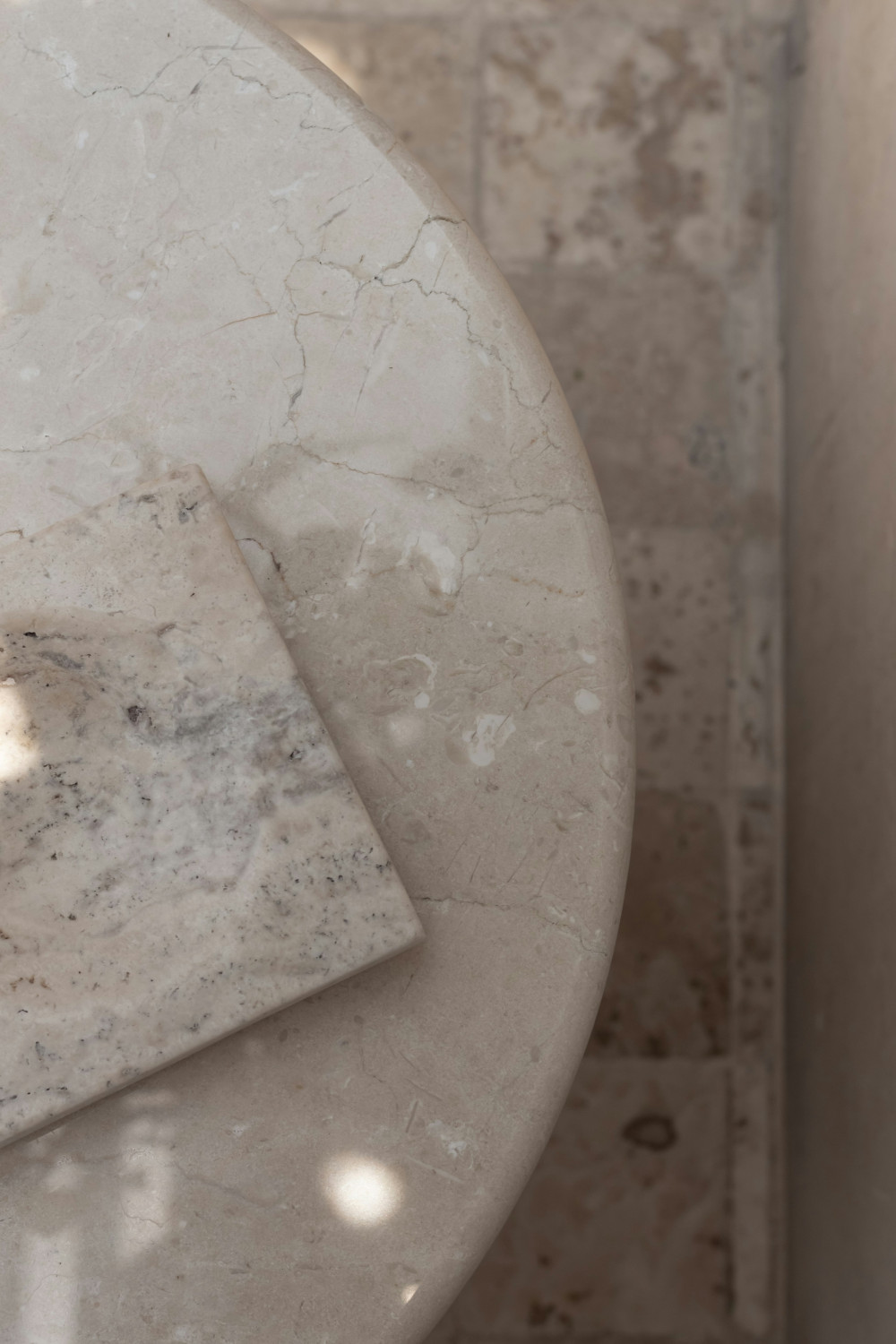How to Choose the Best Natural Stone for your Bathroom
By Karl Hancock 25th Oct 2025
By Karl Hancock 25th Oct 2025

Transforming a bathroom into a luxurious, spa-like sanctuary is a popular aspiration for many homeowners, and few materials achieve this as effectively as natural stone. Its unique beauty, durability, and timeless appeal make it an ideal choice for creating a high-end finish. However, with a variety of options available, selecting the right stone requires careful consideration of both aesthetics and practicality. This guide will walk you through the key factors to consider, from the most popular types of stone to maintenance requirements, helping you choose the perfect material for your new bathroom.
The Appeal of Natural Stone in Bathrooms
The primary reason for choosing natural stone is its unparalleled visual impact. Each slab is a one-of-a-kind piece of nature, with unique veining, colours, and patterns that cannot be replicated by man-made materials. Using natural stone creates a seamless flow and adds a sense of organic warmth and texture to the space. Its solid, substantial feel also gives the impression of permanence and high quality, instantly elevating the value and appeal of your home. Beyond its looks, many types of natural stone are incredibly durable and, with the right care, can last for a lifetime, making them a sound long-term investment.
Popular Natural Stone Options for Bathrooms
When it comes to bathroom applications, some natural stones are better suited than others due to their properties. Here are the most popular choices:
Marble
Marble is the epitome of luxury and elegance. It's beautiful, distinctive veining and wide range of colours—from classic white and grey to deep blacks and vibrant greens—make it a top choice for countertops, floors, and shower walls.
- Pros: Highly sought after for its timeless beauty and sophisticated appearance. It can significantly increase a home's resale value. FM Marble is also heat-resistant.
- Cons: Marble is a relatively porous and soft stone, making it susceptible to staining, scratching, and etching from acidic substances like citrus juices, cleaning products, and some toiletries. It requires regular sealing (annually is recommended) and specific, pH-neutral cleaners.
Granite
Granite is a tough and resilient igneous rock, formed deep beneath the Earth's surface. It is a fantastic option for high-traffic areas due to its hardness and low porosity.
- Pros: Extremely durable, scratch-resistant, and less porous than marble, which means it is less prone to staining. It is available in a huge variety of colours and patterns, from subtle speckled looks to dramatic veining. It is also highly heat-resistant.
- Cons: While less maintenance-intensive than marble, granite still requires sealing to prevent staining. Its weight can make installation more complex and costly.
Travertine
Travertine is a type of limestone that evokes a warm, earthy, and classic feel, reminiscent of ancient Roman baths. It is characterised by its distinctive pitted surface, which can be filled and polished for a smoother finish or left natural for a more rustic look.
- Pros: Creates a soft, warm aesthetic with its neutral tones. It is a cost-effective alternative to marble and granite. When properly sealed, it is durable and a popular choice for floors and vanity tops.
- Cons: Travertine is more porous and softer than granite, making it vulnerable to stains and etching. The pits and pores can trap dirt if not sealed correctly. Regular sealing is essential to protect the stone from moisture.
Limestone
Similar to travertine, limestone offers a serene, earthy charm. It provides a soft, matte finish that feels wonderfully natural underfoot and works well for creating a spa-like atmosphere.
- Pros: Gives a space a warm, inviting, and sophisticated feel. It's often available in soft, neutral colours that complement many design schemes.
- Cons: Limestone is highly porous and softer than marble or granite. It is very susceptible to staining, etching, and moisture absorption, so it absolutely must be sealed properly and regularly to protect it from damage.
Key Considerations for Your Bathroom Project
Choosing the right stone goes beyond just picking a colour and pattern. You need to think about how the stone will function in a wet, humid environment.
Porosity and Sealing
The porosity of a stone is its most critical characteristic in a bathroom setting. This refers to how easily the stone absorbs liquid. The more porous a stone, the more frequently it will need to be sealed. Sealing is a process of applying a protective impregnating agent that penetrates the stone's surface, helping to repel water, oils, and other substances that can cause staining. While a professional can handle the initial sealing, it's vital that you commit to the recommended maintenance schedule to keep your stone looking its best.
Durability and Maintenance
The level of maintenance you are willing to undertake is a major factor. For a busy family bathroom, a hard, less porous stone like granite might be a more practical choice, as it requires less day-to-day vigilance. For a low-traffic guest bathroom or a master en suite where a homeowner is dedicated to care, a more delicate stone like marble can be a magnificent option. Always use pH-neutral cleaners specifically designed for natural stone and avoid harsh, acidic or abrasive products like vinegar, bleach, or scouring powders, as they will damage the surface and break down the seal.
Finishes and Texture
The finish of the stone can drastically change its look and feel, and also its practicality.
- Polished: A high-gloss, reflective finish that brings out the vibrant colours and veining of the stone. This finish can be slippery when wet, so it's not ideal for flooring. It also shows scratches and etching more easily.
- Honed: A matte or satin finish with little to no sheen. Honed stone has a smooth, soft feel and is less slippery than polished stone. It is a popular choice for bathroom floors and countertops as it hides minor scratches and etching more effectively.
- Tumbled or Riven: A more rustic, aged finish with a rough, uneven texture. Tumbled and riven finishes are great for non-slip flooring and adding a tactile element to walls, but they can be harder to clean.
Cost and Installation
Natural stone is a significant investment. Prices vary widely depending on the type of stone, its rarity, and the complexity of the installation. Marble is generally at the higher end of the price scale, while limestone and travertine can be more affordable. Installation costs can also be high due to the weight and precise cutting required, so it's crucial to hire an experienced professional who specialises in stone installation to ensure a perfect, long-lasting finish.
The Final Word
Ultimately, the best natural stone for your bathroom is a choice that balances your personal style with the practical needs of the space. Whether you're drawn to the classic elegance of marble, the robust strength of granite, or the warm, rustic charm of travertine, you can create a unique and timeless bathroom that you'll cherish for years to come. By understanding the properties of each stone and committing to proper care, you can ensure your beautiful natural stone surfaces remain a stunning centrepiece of your home. When choosing the best natural stone for your bathroom, you should consider a balance of aesthetic appeal and practical durability. Key factors include the stone's porosity, its maintenance requirements, and its suitability for a wet, humid environment.
CHECK OUT OUR Jobs Section HERE!
twickenham vacancies updated hourly!
Click here to see more: twickenham jobs
Share:













